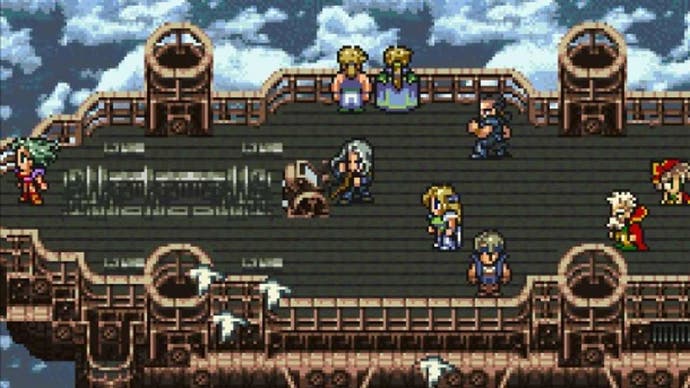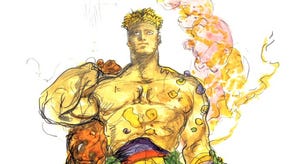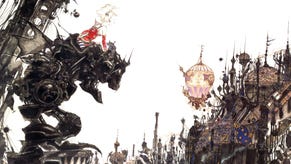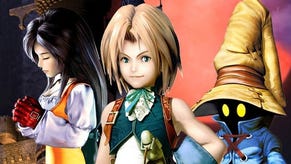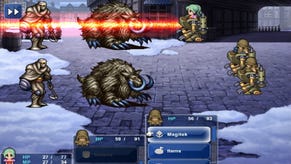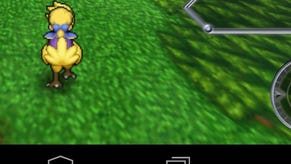Final Fantasy 6 contains a scene of perfect desolation - and not every player gets to see it
So long, and thanks for...
Final Fantasy is one of the most famous video game franchises in history. The first game in the series was released so long ago (1987) that I wasn't even born at the time, and several entries that followed became classics of the role-playing genre. Final Fantasy 16, the latest installment is one of the biggest games of the year now in 2023 - this is a franchise that has shown an awe inspiring level of success and longevity.
One of the various classics in the series is Final Fantasy 6. When FF6 was released in Japan and North America on the Super Nintendo in 1994, Yoshinori Kitase (the game's director) wasn't quite in the position to travel abroad and get a sense for the game's reception outside of Japan. On international PR tours years later, however, he was surprised to find that many Westerners - in contrast to the Japanese fans - seemed to actually prefer FF6 to the much more famous Final Fantasy 7.
I realised this too, perhaps even around the same time as Kitase, when I was a teenager and browsing gaming forums in the early 2000s. I grew up adoring FF7 on the PlayStation (my first console), so the idea that the preceding game was just as good, if not better, was exciting. I wasn't able to play FF6, however, until it had an extremely delayed release in Europe in 2007, via the Game Boy Advance.
And, honestly, I wasn't bowled over when playing through the first part of the game (although there were certainly some striking moments). I just didn't feel a strong connection to the characters, perhaps due to the absence of Kazushige Nojima's work. (Nojima is a writer who was involved in later games in the series, including FF7.)
Over halfway through the game, though, something remarkable occurs, and my opinion changed.
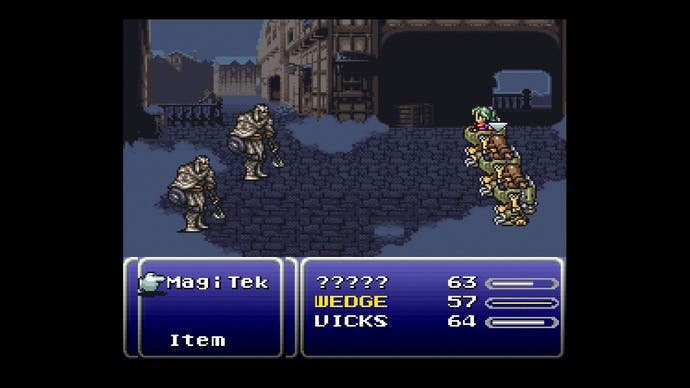
During a battle against the antagonist, (Kefka, one of the most famously malevolent villains in the series) the world is ravaged, and, as the game tells you, 'changed forever'. According to the developers, this wasn't even planned at first; it was something they discussed and then were able to add due to having more time than anticipated during development. This latter segment of the game is referred to as the 'World of Ruin'.
The only sounds, when the first scene of the World of Ruin opens, are that of harsh winds and the ebb and flow of water. There is an unsettling red tint around you, as if everything has frozen in a permanent sunset. You awaken in control of one of the main characters, Celes, an ex-general who was involved in the fight against Kefka. You're in a partly destroyed house on an almost completely deserted island, and the only other person there (an elderly man named Cid, who knew you since your childhood) tells you that you've been in a coma, and that a year has passed since the battle.
There were other survivors on the island, he mentions, but in despair of their situation, they threw themselves from a nearby cliff. Celes, worried about the sickly Cid (she warmly calls him 'granddad'), goes to find him some food while he rests. You go to the shore and catch fish for him while he lays back in bed, offering you a little comment every time. After a few trips, he suddenly says nothing, and Celes realises that he has passed away.
The music that starts here, named Celes's Theme, has an odd opening feel; it's like a building panic, climbing and climbing. Celes begs Cid to wake up ("You promised you'd stay here with me!"), before running out of the house, the music perfectly transitioning from panic to defeat and soft sorrow. Celes climbs the nearby cliff. She hesitates for a long time at the edge, and then steps off.
It's an utterly grim and utterly compelling segment. Maybe it's the intimacy of it all; in a game with multiple main characters, this is a moment where everything focuses on the desolation of just one woman as she struggles, alone and in a mutilated world. She somehow survives the fall, and goes on to escape the island, but Celes's desolation is the moment that stands out. It's probably one of the most memorable moments in a series full of dramatic and emotional scenes.
Much later, however, I was surprised to find out that this powerful moment may not even happen during your playthrough. It's secretly changeable; the game doesn't specifically tell you, but the type of fish you pick up and give to Cid will determine whether he lives or dies. If Cid lives, the entire scene where Celes throws herself from the cliff never unfolds: Cid recovers from his illness, and Celes leaves the island promising to return for him. I find myself fascinated by how different the story feels between the scenario where Cid lives and the one in which he perishes; there is a greater sense of peace in the former, and a disturbing isolation in the latter.
Kitase, in the same interview linked earlier, explains that Cid dying was in fact the original path, and this is why there are deliberately no hints in the fish minigame. He decided, however, to give players another route where Cid lives, but one that was harder to gain. Games offering narrative paths is nothing new. Why is it this specific use of the concept that stands out to me, then?
Perhaps it's due to the way the game itself doesn't call attention to this changeable quality - in fact, it hides it. Many of us aren't really making a choice, as we are completely unaware of the way the Celes section works. There is something compelling about how the entire feel of the game changes depending on something the player isn't even aware of, and something a little startling, too, in how my choice for the most memorable moment in FF6 (and one of the most memorable in the Final Fantasy series as a whole) might not even occur when you play the game.
The part of me that likes to tell traditional stories instantly warns me that this is a risky idea - this concept of making such an excellent scene changeable, even if the game is 'loaded' to follow one path more than the other. And yet another part of me, a bit more open to new approaches and experimentation, is much more hesitant to criticise Kitase's idea. Does inserting a different path for the scene automatically diminish the original? (That is certainly what some argue in regard to an unchangeable critical death scene in the following game, FF7, and how this should be left alone in the new remake.)
I don't have an answer to this yet; it's just something I dwell on. I am, however, reminded of something I came across in relation to the well-known Roger Ebert critique of games. The writer Clive Barker wonders if Ebert cannot think of games as art because of the changeable nature of the narratives, that 'Shakespeare could not have written 'Romeo and Juliet' as a game because it could have had a happy ending'.
Barker goes on to conclude that this changeable quality is actually a strength rather than a weakness in the medium, and I certainly agree. I am still trying to find my own answer to how I feel about narrative paths in specific scenes such as the Celes one, though. Final Fantasy 6, in its mysterious, secretive manner, keeps me contemplating.
